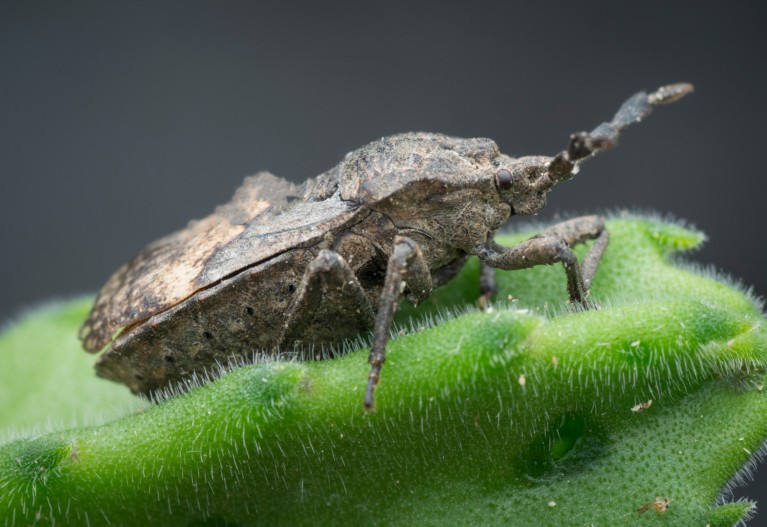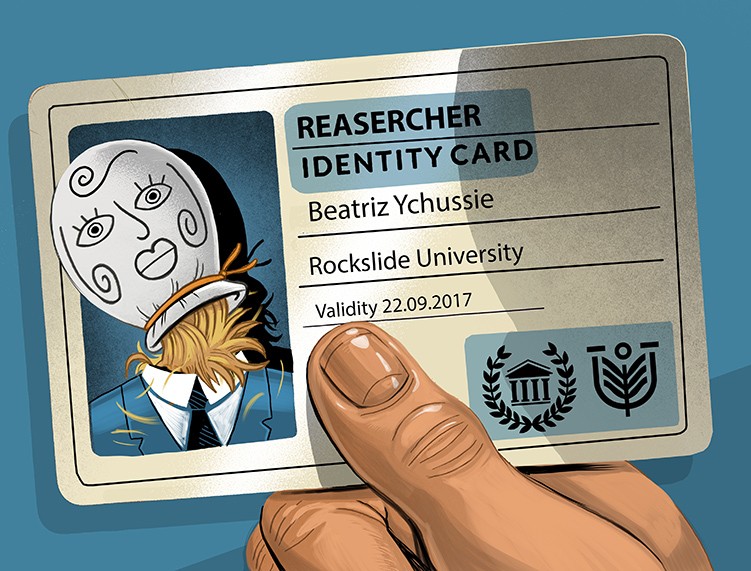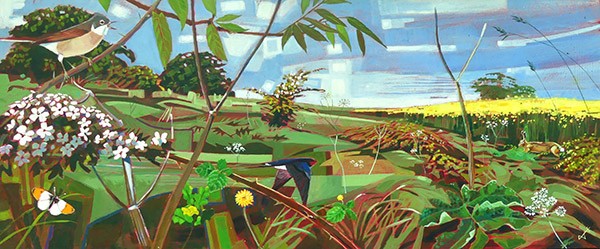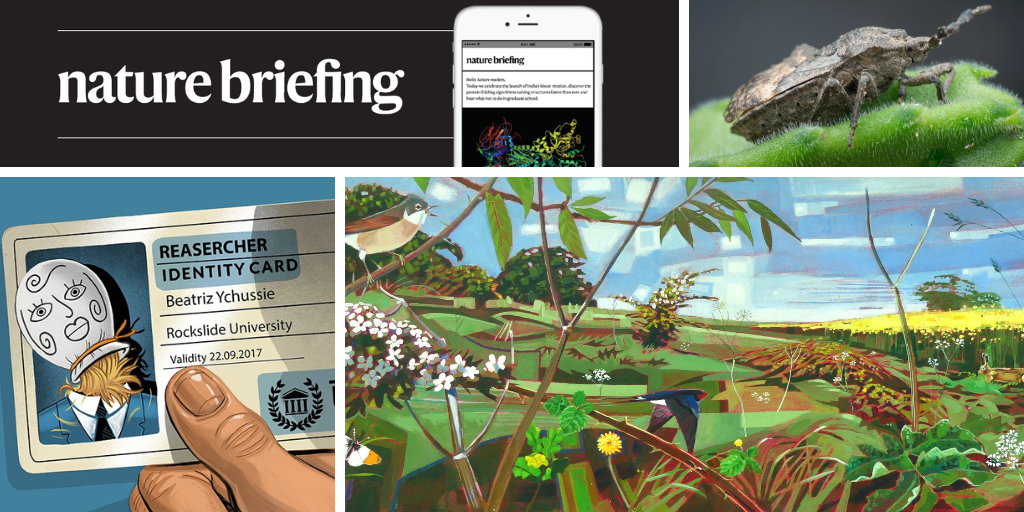You have full access to this article via your institution.
Hello Nature readers, would you like to get this Briefing in your inbox free every day? Sign up here.

A stinkbug in the Megymenum genus. At least one species in this group has specialized leg strucutres that harbour helpful fungi.Credit: Young Swee Ming/Shutterstock
It’s not unusual for insects to have ears on their legs, but when researchers took a closer look at what was thought to be an eardrumlike structure on female Japanese dinidorid stinkbugs (Megymenum gracilicorne), they got a surprise: a previously unknown type of symbiotic organ. Inside, the stinkbugs nourish symbiotic fungi, which they carefully rub over their freshly laid eggs. The fungi grow over the clutch like a blanket, shielding the eggs against the advances of wasps (Trissolcus brevinotaulus) looking to lay their own offspring inside.
Features & opinion

Illustration by Adam Wójcicki
In 2015 and 2016, mathematician Beatriz Ychussie published four papers and reviewed multiple manuscripts for reputable journals — an impressive performance for someone who doesn’t exist. Ychussie was fabricated by a paper mill — a company that sells fake research papers — and is just one of dozens of examples of mills duping publishers with fake academics. To combat this fraud, publishers are debating more stringent measures to confirm the identity of authors and reviewers. But some of these checks risk excluding scholars who aren’t based at well-known institutions and those in low- and middle-income countries, say experts.
NAMs — short for ‘novel alternative methods’ or ‘new approach methodologies’ — are biomedical research techniques that don’t involve the use of animals.
• One group of researchers argue that NAMs are the future. They urge journals, regulators and funders to adjust their priorities to ensure that the use of novel alternatives to animal testing are applauded, not penalized.
• But simply ending animal testing isn’t the answer, argues biomedical researcher Kent Lloyd. The polarized debate over NAMs risks distracting scientists from a dispassionate assessment of the best model for the job, he says.
Nature | 9 min read & Nature | 5 min read
Supportive supervision leads to happier PhD students, reveals Nature’s 2025 global survey of more than 3,700 doctoral students. “Group leaders might feel that modern academic life leaves little space for long conversations. But even short, regular check-ins can make a difference,” suggests a Nature editorial. “Time spent with the next generation of scientists is an investment.”
Image of the week

A rewilding project in the United Kingdom has been captured on canvas to give an artistic perspective on biodiversity and climate change solutions. Thirty artists took part in a year-long project to observe land that had been ploughed up for crops during the World War II ‘Dig for Victory’ campaign. The Society of Wildlife Artists Massingham Heath Project show ends on Saturday in London and continues online. (Eastern Daily Press | 4 min read) (Massingham Heath field margin by Brin Edwards)
Once I baked cookies in a chemistry-class lab oven — a prank that resulted in very poorly cooked, and undoubtedly not particularly safe to eat, goodies (sorry, Mr McLaren!) Chemistry PhD students at the University of Waterloo are doing a much better job of bringing biscuits to the world with their fund-raising bake sales — an approach mirrored by several graduate student societies. If you fancy giving it a try, get started with University of Waterloo’s recipe for idiot-proof cookies for scientists.
Let me know what science-lab pranks you’re most (or least) proud of — plus any feedback on this newsletter — at [email protected].
Thanks for reading,
Flora Graham, senior editor, Nature Briefing
With contributions by Jacob Smith
• Nature Briefing: Careers — insights, advice and award-winning journalism to help you optimize your working life
• Nature Briefing: Microbiology — the most abundant living entities on our planet — microorganisms — and the role they play in health, the environment and food systems
• Nature Briefing: Anthropocene — climate change, biodiversity, sustainability and geoengineering
• Nature Briefing: AI & Robotics — 100% written by humans, of course
• Nature Briefing: Cancer — a weekly newsletter written with cancer researchers in mind
• Nature Briefing: Translational Research — covers biotechnology, drug discovery and pharma


